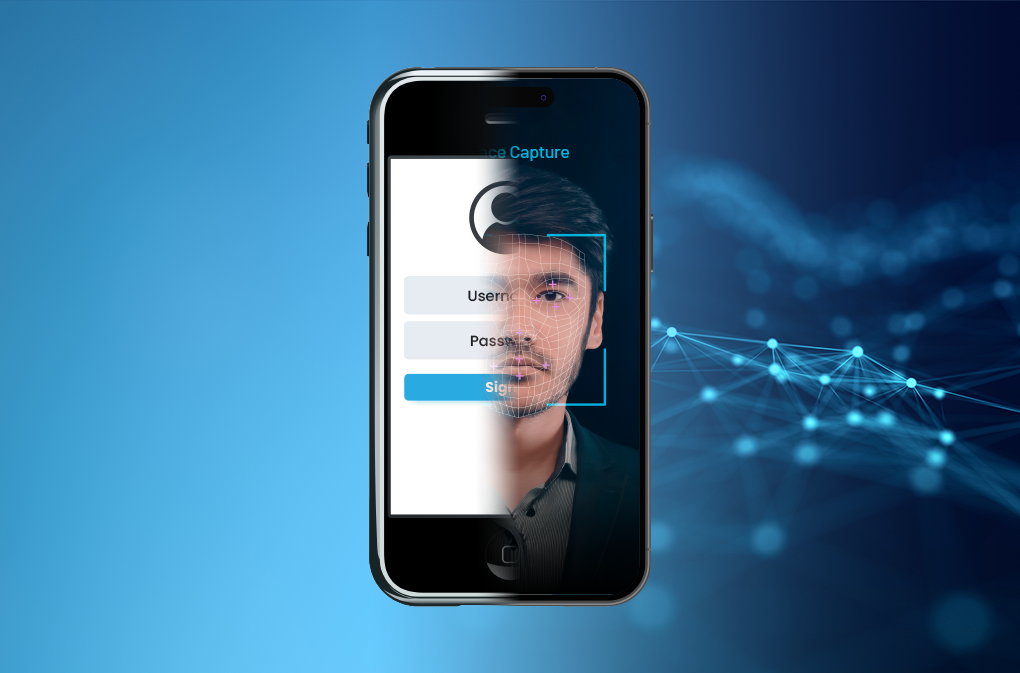How Biometric Age Verification Is Becoming the Go-To Biometric Compliance Solution
Biometric age verification has evolved from a minor compliance consideration into one of the most pressing regulatory challenges facing digital platforms today. From social media and gaming to e-commerce and streaming services, virtually any platform accessible to minors now faces regulatory scrutiny. The reality is that self-declared age verification no longer meets today’s industry standards. Companies now face complex legal mandates with unprecedented financial penalties and operational consequences.
Florida Attorney General James Uthmeier’s recent lawsuits against a well-known adult website’s parent company and its other platforms demonstrate how age verification enforcement has swiftly escalated to direct legal action. The state filed complaints alleging violations of HB3, Florida’s law requiring websites to verify users are at least 18 years old, targeting sites that allegedly ignored the new regulation since it took effect in January.
“We passed strong legislation to keep kids from being exposed to harmful and toxic material, and instead of following it, these platforms ignored it,” Uthmeier stated. The under-fire company has now blocked access to its sites in over 20 states with similar digital age verification requirements rather than implementing the required compliance measures.
This regulatory trend signals a fundamental recalibration of digital business risk. Companies that built their growth strategies and reputations around minimal friction and maximum accessibility now confront a stark choice: implement comprehensive biometric age verification systems or accept massive financial exposure. The regulatory momentum gained from legislation like the UK’s Online Safety Act appears irreversible—69% of Britons support the new rules according to YouGov polling, even as 52% remain skeptical about their effectiveness, creating additional pressure on platforms to deploy dependable solutions.
The Business Case Against Self-Declaration
Until recently, digital platforms relied on self-declared age verification—the digital equivalent of an honor system—that provided legal cover while maintaining rapid customer acquisition. That approach is no longer viable. Self-declared methods have evolved into active business liabilities that expose organizations to regulatory enforcement and massive financial penalties.
California’s Age Appropriate Design Code, despite ongoing legal challenges, has established a precedent that other jurisdictions are eagerly following. Texas, Louisiana, and Utah have implemented similar age verification requirements that have forced major platforms to restrict access rather than comply. Australia’s eSafety Commissioner is developing age assurance frameworks, while the European Union is incorporating age verification protections into its Digital Services Act implementation. The message is clear: lazy compliance measures no longer provide protection against aggressive regulatory action.
The cost analysis is stark. With potential penalties reaching tens of millions of dollars compared to implementation costs typically measured in hundreds of thousands, the financial calculus strongly favors proactive compliance. If companies continue to rely on self-declaration, they face regulatory fines and the broader business disruption that accompanies such high-profile public penalties—including user trust erosion, advertiser flight, and lasting competitive disadvantage.
Complicating this calculation is the reality that many platforms built their user base on anonymity and frictionless access, features that comprehensive digital age verification inherently undermines. Platforms must navigate a strategic balancing act between regulatory compliance and user retention, as customer reactions to age verification can vary significantly across different industries and audiences. Missing either target creates substantial financial risk from regulatory penalties on one side or revenue loss on the other.
These strategic considerations translate into concrete operational challenges at the user level. Each underage user who bypasses these barriers increases regulatory risk, as platforms must demonstrate they have implemented reasonable measures to prevent underage access. The question facing executives is no longer whether to upgrade their biometric age verification capabilities, but how quickly they can implement genuinely effective solutions without alienating their user base.
Sector Analysis: The Business Case for Age Verification
The strategic importance of robust age verification becomes clearest when examined through industry-specific lenses, where regulatory violations trigger immediate business consequences that extend far beyond financial penalties.
Online gaming platforms face increasing regulatory scrutiny over underage access to mature content and gambling-adjacent features. Regulatory penalties in this sector often result in content restrictions, platform limitations, and public controversies that damage brand value and user acquisition. Effective age verification enables gaming companies to maintain mature content offerings while demonstrating compliance with regulations.
Online gambling operators confront the most severe age verification requirements. Regulatory violations in this sector can result in license revocation, operational shutdown, and substantial financial penalties. These businesses require age verification solutions that provide certainty while preserving the seamless user experience essential for customer acquisition in competitive markets.
Alcohol, tobacco, and cannabis retailers expanding into e-commerce face strict age verification mandates that vary significantly across jurisdictions. Compliance failures compound rapidly as violations in one market can trigger scrutiny in others, making comprehensive age verification essential for multi-jurisdictional growth strategies.
The risk mitigation is straightforward: verification failures cascade into regulatory penalties, license suspensions, and brand damage that far exceeds the cost of implementing reliable age verification. High-profile compliance violations create lasting reputational consequences that persist long after financial penalties are resolved.
Revenue protection through seamless age verification drives conversion rates while ensuring compliance. Companies that deploy frictionless verification processes avoid the user experience degradation that drives customers to competitors while building trust that supports long-term customer relationships.
How Biometric Age Verification Works
The compliance challenges outlined above would be insurmountable if the only solutions required users to upload government identification documents or undergo lengthy verification processes. Fortunately, a technical revolution in biometric age estimation is enabling companies to meet regulatory requirements while maintaining the seamless user experiences that drive digital business success.
Facial age estimation technology represents the convergence of advanced computer vision, machine learning algorithms, and privacy-preserving architectures. Unlike document verification systems, biometric age estimation analyzes facial characteristics in real-time to determine whether users meet minimum age requirements.
The technology operates through sophisticated analysis of facial geometry, skin texture, and other biological markers that correlate with chronological age. Modern algorithms trained on diverse datasets demonstrate improved accuracy, although performance can vary significantly across different demographic groups and lighting conditions.
NIST testing results demonstrate continued improvements in both accuracy and bias reduction across demographic groups. High-quality facial image processing supports reliable biometric analysis, which is why Daon’s #1 NIST ranking in facial image quality benchmarking provides the technical foundation required to engineer reliable age estimation systems.
Technical excellence in age verification necessitates that privacy protection be built into the system architecture from the ground up. Rather than storing biometric templates or personal identification data, these solutions perform age analysis and immediately discard the biometric information, retaining only the binary determination of whether a user meets age requirements. This approach addresses regulatory mandates while minimizing data liability and exposure to privacy risks.
Real-time processing eliminates the friction associated with document upload workflows. Users can complete initial age verification with a simple selfie, receiving immediate access approval in most cases, rather than waiting hours or days for a manual document review. When age estimation results fall within acceptable confidence thresholds, the seamless experience preserves conversion rates while ensuring regulatory compliance.
While age estimation technology is improving, it doesn’t meet the definitive verification standards most regulations require, necessitating hybrid approaches. The most effective digital age verification platforms recognize that biometric estimation serves as the first screening layer—users whose estimated age falls near regulatory boundaries trigger step-up verification processes that may require document validation or additional identity checks.
This tiered approach balances user experience with regulatory certainty, ensuring that platforms maintain security integrity while minimizing friction for the majority of users who can be verified through biometric analysis alone.
Privacy-Preserving Age Verification Solutions
The intersection of age verification requirements and privacy regulations creates a complex compliance landscape that many organizations struggle to navigate. However, privacy-preserving age verification solutions transform this apparent conflict into a competitive advantage when implemented strategically.
Zero-knowledge age verification represents an emerging technical solution to seemingly incompatible regulatory requirements. These systems work by having users provide identity verification to a single, trusted source that generates cryptographic tokens confirming age status without revealing specific personal information.
Similarly, mobile driver’s licenses (mDLs) are gaining adoption for age verification—the Baltimore Orioles’ Camden Yards recently became the first MLB stadium to accept Maryland mDLs for alcohol purchases, allowing fans to simply tap their smartphones at vendor stations. When users need age verification across multiple platforms, they can present these tokens or mDLs rather than repeatedly submitting identity documents to each service provider, though platforms must specifically integrate support for these verification methods before they become usable.
Companies implementing privacy-preserving age verification solutions will reduce their data liability exposure, minimize breach risk, and demonstrate a dedication to user privacy that increasingly drives consumer choice. Rather than viewing privacy as a constraint on business objectives, leading companies are leveraging privacy-first age verification as a means of differentiation in crowded markets.
While competitors struggle to balance regulatory compliance with user experience, companies that use privacy-preserving age verification deliver seamless onboarding, building user trust rather than creating friction. The result is higher conversion rates, stronger customer relationships, and reduced regulatory risk across all operating jurisdictions.
“Age verification requirements still raise serious privacy and free expression concerns,” notes Samir Jain, vice president of policy at the nonprofit Center for Democracy & Technology. “If states are to go forward with these burdensome laws, biometric age verification tools must be accurate and limit collection, sharing, and retention of personal information, particularly sensitive information like birthdate and biometric data.”
Organizations that address these concerns proactively through privacy-preserving solutions position themselves advantageously for continued regulatory evolution while building trust with users who increasingly value privacy protection.
The Daon Advantage: NIST #1 Ranked Image Quality Plus Comprehensive Document Verification
Daon’s digital age verification technology addresses regulatory requirements through privacy-preserving biometric analysis that integrates seamlessly with existing identity verification platforms. The solution provides real-time age estimation without storing personal information, meeting compliance standards while protecting user privacy.
For users whose biometric age estimation falls within clear thresholds, verification is immediate and frictionless. Users with ambiguous age estimates are asked to complete additional document verification to meet compliance requirements.
Integration capabilities enable companies to deploy age verification across web, mobile, and kiosk channels through unified APIs and SDKs that provide a consistent user experience. The privacy-preserving architecture reduces data liability while delivering accuracy.
ROI for companies materializes through improved compliance posture, minimal user friction, and reduced operational overhead compared to fully document-based verification systems. Organizations implementing Daon’s age verification solutions protect revenue streams, reduce regulatory risk, and build a competitive edge in compliance-driven markets.









